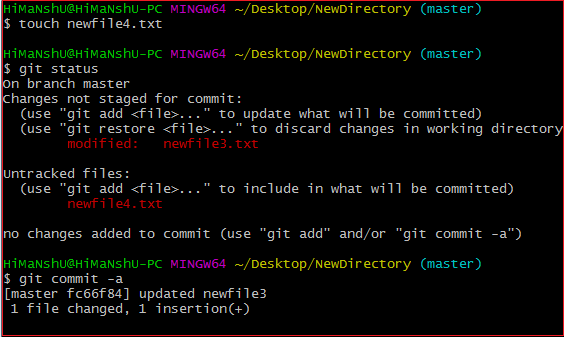

This ensures that each of the changes is thoroughly examined before merging. Be approved by a specified number of developers.Each individual commit in the review can be required to:
#Git commit code#
This is especially useful when the are strict dependencies between the work being done by the teams, and the code needs to go into production simultaneously in order to work. With Helix TeamHub, you can also create one code review that encompasses work being done by team members across multiple repos. And you can watch the team making changes to each in one place. This lets you see how repos are interrelated. Each repo is visible in the context of the project. It lets you have multiple Git repos inside a project. Helix TeamHub solves complex development challenges for your Git developers. It is important when using Git to not alter your local history. If different projects or branches are governed by unique policies, keep them in separate codelines. While this may seem like an administrative burden, the right source code management tool makes this a simple task.įor security and audit purposes, make sure that your changes can be understood by other developers. Providing related test cases and files with your commit ensures that others can use your check-in without breaking their builds. This is especially important when working between branches. When checking in a change, make sure all affected files and unit tests are included. When code is ready to be checked in, it should launch a code review. Pick a code review tool that does not bottleneck development. Using code reviews creates a quality gate that can promote knowledge sharing and code reuse. To help protect the quality of your codebase, it is important to require code to not only pass a build, but also be reviewed. You should test your code often, and commit once. Bad commits make tracing bugs and resolving conflicts a nightmare. If you’re hesitant about your commit passing a build or test, don’t do it. Small changes to text editor to enhance user experience.Fix dynamic field init method to show status.Make sure that you provide enough detail to answer: Keep in mind that your team members will need to be able to read this message and understand exactly what you have done. This separates your subject line from the message to ensures only the subject line displays. Write your summary in present tense, limit the subject line to 50 characters, and always leave the second line blank. When writing a commit message, start with a short summary of your change. If you are fixing two separate bugs, there should be two separate commits. Everything inside the wrapper accomplishes one purpose. Think of a commit like a wrapper around a set of changes. It’s easier for developers to understand the submitted code when only related changes are checked in. And if something goes wrong, smaller commits make it easier to revert bad check-ins, which helps you maintain a stable codebase.

Make Small, Single-Purpose Commitsīy committing only small sections of code, everyone on your team can quickly understand what work has been completed. This will make diagnosing bugs and tracing changes a lot easier. To prevent regression, ensure that each check-in has a single purpose. Even though this seems like an efficient way to develop, it can create problems later. It is also important not to include a large number of changes in a single branch. By committing more frequently, you help to eliminate confusion and decrease the chance of a time-consuming merge. With short-term branches, you reduce check-out times, improve traceability, and expedite code reviews. Using this method has proven to minimize bad check-ins. You also want to direct developers to use smaller, short-lived branches. Whatever your strategy, communicate to the team how you want to branch. 5 Git Commit Best Practices Branch Frequently, Commit Oftenĭeciding on a correct branching strategy is vital to streamlining the commit process.
#Git commit plus#
Plus it can delay development teams, and even a release.īelow are our git commit best practices to help you have higher-quality check-ins to prevent delays. A bad check-in can lead to broken builds and regressions. This operation allows individual developers to contribute their work back to an ever-evolving codebase.īut not all commits are the same. In Git, this is referred to as git commit. What Is a Git Commit?Ĭhecking in code is the essential step with any version control system. Here, we share what the top Git best practices are - especially for Git commit.


 0 kommentar(er)
0 kommentar(er)
